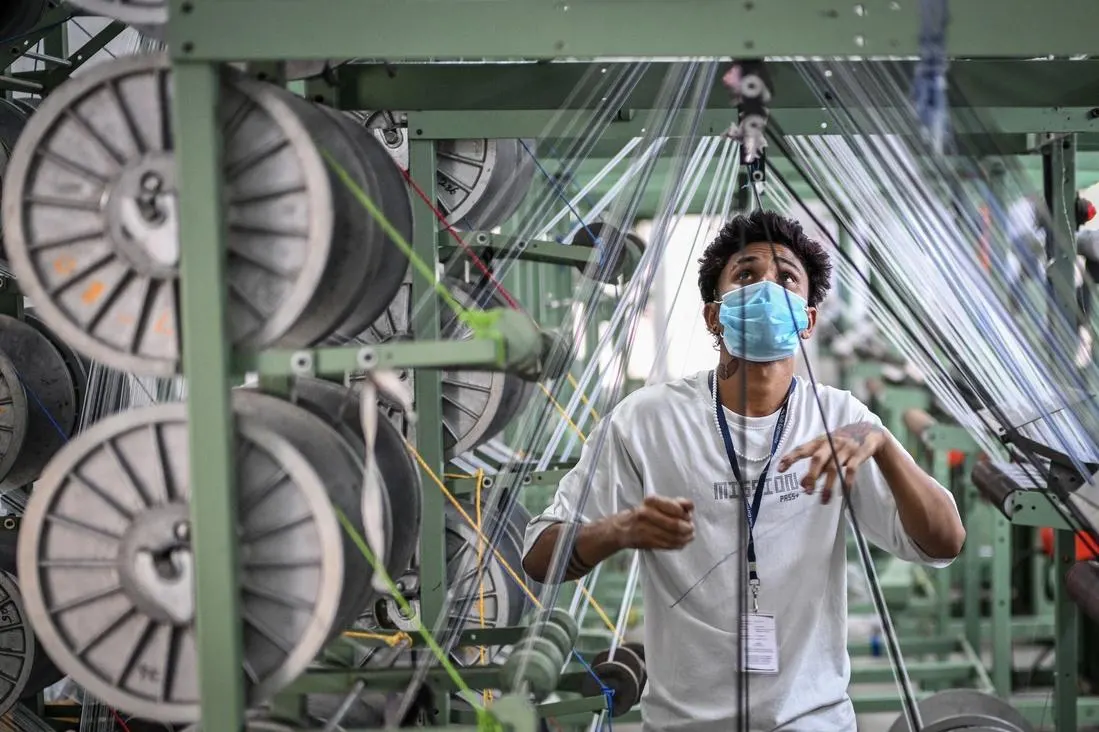Copyright forbes

An employee works at a garment factory in Tiruppur, in India's southern state of Tamil Nadu. Trump's 50 percent tariffs on Indian goods, imposed in August, have upset the country's $11 billion textile export industry and shaken confidence in the U.S. market. R. SATISH BABU/AFP via Getty Images In the past few months, India has taken steps to effectively adapt to the barrage of trade policies being weaponized by U.S. President Donald Trump, who implemented tariffs to disrupt India’s pharmaceutical drugs in October, and raised H-1B visa costs that are crucial for growth of Indian IT services sector last month. With an aim to adversely impact India’s purchases of Russian oil, in August the U.S. has also imposed 50% tariffs on India’s exports, which are worth more than $48 billion, apparel and textiles, gems and jewelry, shrimp, leather, chemicals, electrical and mechanical machinery being the worst hit. For India’s gems and jewelry industry, the U.S. is the largest export destination, and the fallout of the tariffs is expected to be severe on the city of Surat, in western India, which accounts for nearly 90% of the world’s diamond processing and directly employs about 800,000 workers. The U.S. market accounts for nearly 40% of Indian seafood exports, so the tariffs have caused stockpile losses and farmer distress, especially in the case of frozen shrimps, which account for nearly 70% share of India’s total marine exports. In addition to this, India’s textile exporters find themselves saddled with spare production capacity, finding it difficult to compete with products from other countries, which face a much lower U.S. tariff duties. There have been considerable revenue losses. Ratings firm Crisil estimates the pace of revenue growth for readymade garment manufacturers to halve because of the tariffs. MORE FOR YOU Since majority of these affected sectors are labor intensive and can cause a huge number of job losses, India has simplified and revamped Goods and Services Tax (GST) to spur domestic demand for export products and thereby utilize their spare export production facilities. The Indian government is expediting the e-commerce export hub scheme for warehousing and trade facilitation. It is trying to speed up the rollout of the export promotion mission, which comprises of trade finance schemes, programs to improve quality standards and market access, and activities for better recall value for Brand India. Along with this, Reserve Bank of India (RBI) is playing an intricate role to cushion the economy from the fallout of U.S. tariffs. It has chosen to let the Indian rupee depreciate to all-time low against the dollar. A weaker rupee can boost export competitiveness and generate a larger surplus for government dividends, particularly helpful amid expected fiscal pressures from the reduced GST rates. In October, the Central bank of India, RBI, also undertook banking sector reforms to allow businesses easier access to foreign loans and ramped up efforts towards internalization of the Indian rupee to replace U.S. dollar as the preferred currency for cross-border trade, especially with India’s neighbors Nepal, Bhutan and Sri Lanka. Beyond measures targeted towards the neighboring countries, in the past few months India has inked trade agreements with the U.K., it is negotiating expansion of its pact with Australia and accelerated Free Trade Agreement (FTA) talks with the EU, Oman, ASEAN, African and Latin American countries. India is discussing collaborations to consolidate and grow its existing exports with the UAE in the pharmaceutical sector and Russia in the textile sector. “Our ministry and different line ministries are already looking at complementarity of our strength areas with other economies, so we can look at expanding trade with other countries," Piyush Goyal, India’s commerce and industry minister, said at the Economic Times World Leaders Forum. According to UN Trade and Development, diversification of markets can help India to reduce the highest risks and uncertainty in global trade and commerce in more than a decade. With multiple markets India can redirect shipments easily, cushioning losses, and overcome a slowdown in one region with gains elsewhere. Similarly, trade agreements provide rules and dispute settlement mechanisms, which reduce shocks and encourage long-term investment. “In negotiations, what’s helping India in its moment of need is that the country has positive reference points in history with most of the other nations," says Kanica Rakhra, assistant professor at Kautilya School of Public Policy. "India possesses the necessary soft power that could prove vital to build strong trade relationships.” In August, India has managed to consolidate its historical ties with Japan to launch the Economic Security Initiative to promote supply chain resilience in strategic sectors of semiconductors, clean energy, telecom, and new and emerging technologies. For India, Japan represents capital, technology, and rules-based reliability. As for Japan, India offers scale, markets, and a young workforce. The country of the rising sun has announced nearly $68 billion in private sector investment into India over the next decade. At a time when global investors pulled out a record high $1.4 billion from Indian equities in September, weighed down by U.S. tariff concerns. Due to the Indian government’s timely efforts in establishing effective international alliances, among the 15 countries mapped for exposure to U.S. policy shifts, India has come out as the second-least exposed. Even though India’s exports to the U.S. are expected to drop considerably from $86.5 billion last year, total exports in 2025 have achieved a growth rate of 4–5% over the past six months, until September. Till now, India’s GDP growth has remained largely unaffected by President Trump’s tariffs. Before the announcement of the U.S. tariffs, the International Monetary Fund had projected the Indian economy to grow at 6.4% for 2025-26. In October IMF has revised it upwards to 6.6% (2025-26), which is more than double the global economic growth average of 3.2%. India has been able to achieve this “with carryover from a strong first quarter more than offsetting the increase in the US effective tariff rate on imports from India since July,” the International Monetary Fund said in its World Economic Outlook report. However, as India and the U.S. inch towards finalizing a Bilateral Trade Agreement (BTA) by the end of 2025, India’s next quarterly growth numbers, due later this year, will provide a clearer picture of whether momentum in domestic activity can sustain the upward revision of its economic growth. In the longer term to withstand tariffs, rather than GST proving to be just a flash in a pan moment, the country will require a continued set of reforms, investment flows, supportive monetary policies, and resilient domestic demand, which will prove to be central to maintaining its tag of the fastest-growing major economy in the world, and attaining high forecasted growth rates of 6.2% for the year 2026-27. Editorial StandardsReprints & Permissions



